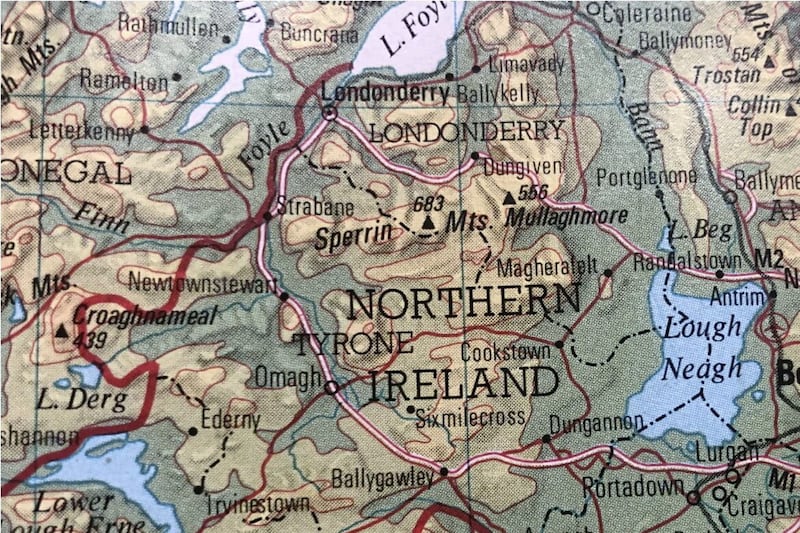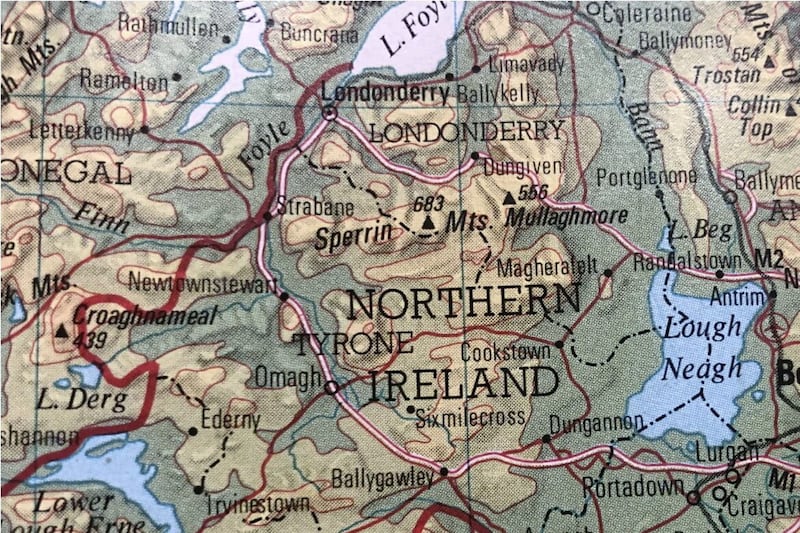ON August 15 1921, at a low-key ceremony in the unlikely setting of Portrush Town Hall, Sir Denis Stanislaus Henry was sworn in as the first Lord Chief Justice of Northern Ireland.
Under the Government of Ireland Act 1920, the judiciary of Ireland was divided into two judiciaries, north and south. Henry's appointment was agreed by the northern government at the beginning of August, along with that of Northern Ireland's first Attorney General, Richard Best.
Up to that point, with the transfer of services delayed and the British government in talks with Sinn Féin, the Northern Ireland project looked a little stillborn.
The Irish News mockingly stated that the northern parliament was "inherently unworkable... Appointments have been made carrying large salaries; and we now learn that the absurd Northern judiciary has been given a send off with the elevation to the non-existent bench of Mr Denis Henry, KC, as Lord Chief Justice... Sir James Craig's Government cannot undertake any work with any degree of permanency attaching to it because there can be no permanency in this Partition".
Very little emphasis was made of Henry's Catholicism by the Press. The Northern Ireland prime minister James Craig said years later: "I have never yet known a country prosper where appointments to the judiciary were made on religious grounds. As long as I have anything to do with it, that aspect will never enter into my mind."
When, in 1930, five years after the death of Henry, after a charge was made that no Catholic had been elevated to the bench, Craig replied that "since the death of our old friend, Denis Henry", it had "not been possible to find a Catholic lawyer fully-qualified to hold a judgeship", clearly inferring Catholics could aspire to judiciary appointments if they met the requirements.
Despite Craig's assertions to the contrary, the history of Northern Ireland's judiciary suggests appointments to its ranks were once barely attainable for aspiring Catholics.
After Henry's death in 1925 no other Catholic was appointed to the highest court until 1949. As late as 1969 Catholics held a mere six out of 68 senior judicial appointments.
Whilst Henry was a Catholic, he was not a nationalist, holding a truly unique position by being a Catholic Ulster Unionist MP before he was appointed as Lord Chief Justice.
Although it was not uncommon for Catholics to be unionist in political outlook in the south and west of Ireland, it was considerably less so in Ulster.
Born in Derry in 1864 into a strongly conservative and pro-Union family, he built his reputation as a barrister on the north-west circuit of Ireland, an area extending from Westmeath to Derry, Tyrone and Donegal. He was known as the father of the north-west circuit.
He became MP for Derry South through a by-election victory in May 1916. Once elected, he soon was promoted to Irish law officerships; Solicitor General in 1918 and Attorney General in 1919.
As Attorney General, he served during a time of great upheaval in Irish politics and society during the Anglo-Irish War of Independence. He was responsible for introducing the Restoration of Order in Ireland Act, becoming law in August 1920, which established military courts-martial with the power to impose the death penalty.
His introduction of emergency legislation and his strident opposition to compromising with those he regarded as nothing more than rebels and criminals made him top of the list to head the northern judiciary, where similar circumstances were likely to prevail.
Upon Henry's appointment, he was faced with the unenviable task of ensuring the judiciary appointments as well as a functioning justice system were in place just weeks later, by October 1, the date the Northern Ireland judiciary was to be inaugurated.
The Supreme Court in its original foundation comprised of five judges. Henry also had to oversee the appointment of officials and to secure a building as a courthouse by October 1.
Much of the burden of setting up of a justice system from scratch fell to Henry who engaged in constant work, setting up the courts and their administration, involving him in endless discussions and negotiations with the governments in Belfast and London, with the Bar and the Law Society, council officials, his Dublin counterparts and many others. Added to his judicial work, this made up a formidable workload.
To acquire a site and erect a suitable building for the new court was not possible by October 1. The government purchased the site of the old potato market, and it was here on Chichester Street in Belfast that the new law courts opened in 1933.
For the 12 years before the permanent courthouse was built, it was necessary to use temporary accommodation. The Antrim County Courthouse on the Crumlin Road in Belfast was chosen by Henry as the best option available at the time.
The courthouse was not suitable for the housing of a permanent staff to carry on the departmental work of a permanent High Court. The working conditions for the staff were very cramped. The temporary courthouse lacked a waiting room for jurors, and contained no separate accommodation for women jurors. There were also no facilities available for the Press.
Henry had many meetings and discussions with treasury officials in Dublin from September to November 1921. Members of the legal civil servant branch in the Four Courts in Dublin were eligible to transfer themselves to the northern courts, with five people ultimately arriving from Dublin.
In total, there were 64 officials appointed in the court office from registrar to messenger. Henry conducted many interviews personally as well as arranging the desks, the furniture, dies, seals, presses and the forms for the new judiciary.
The new justice system for Northern Ireland became operative from October 1 and was formally opened three weeks later, on October 24. It was another day of ceremony, reminiscent of the opening of the northern parliament four months earlier, another day to demonstrate the viability of the northern jurisdiction.
Judges, assembled in full robes and full-bottomed wigs, listened as Lord Chief Justice Henry declared, we "shall do our best to carry on the Traditions handed down to us by the great Judges who adorned the Irish Bench".
The judges in situ during the birth of Northern Ireland had an extremely difficult task, giving the conditions at the time and the uncertainty that hung over the nascent jurisdiction. Henry was involved in some highly controversial cases as Lord Chief Justice.
In July 1922, he ruled against the plaintiff in a landmark case (O'Hanlon v Governor of Belfast Prison) challenging the legality of the unionist government's Special Powers Act.
In a case of special constables killing three Catholics in June 1922, Henry agreed that the security forces had been fired on. He rejected the claims for compensation, and found that the deaths arose out of unlawful assembly. As Lord Chief Justice of Northern Ireland, Henry continued with his support for the forces of law and order.
The huge efforts Henry made to set up the judiciary of Northern Ireland and the stresses of those turbulent times took their toll on Henry, who died, following a seizure, on October 1 1925, at the relatively young age of 61. His son believed the exertions of the previous four years contributed to his death.
While people lauded his extraordinary legal career, many co-religionists, as pointed out by nationalist MP TP O'Connor, resented "that this man of Celtic blood and of the Catholic creed should range himself in the ranks of the Orangemen".
Cormac Moore is author of Birth of the Border: The Impact of Partition in Ireland (Merrion Press, 2019).








